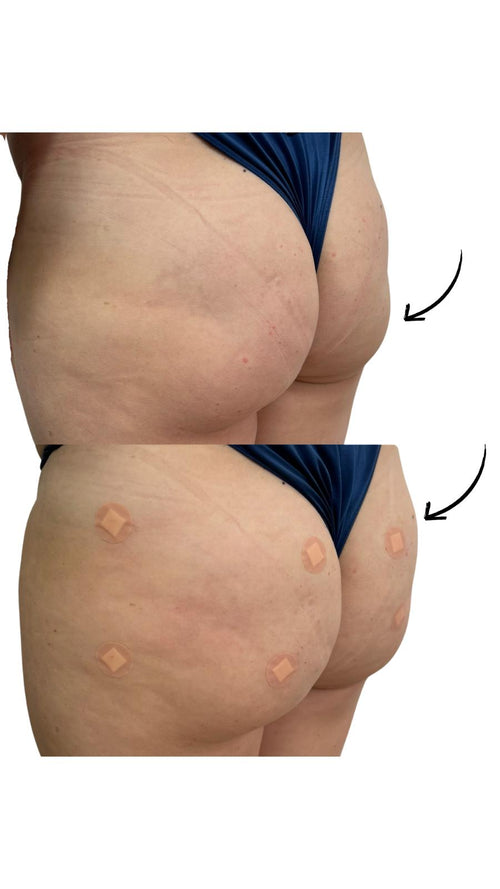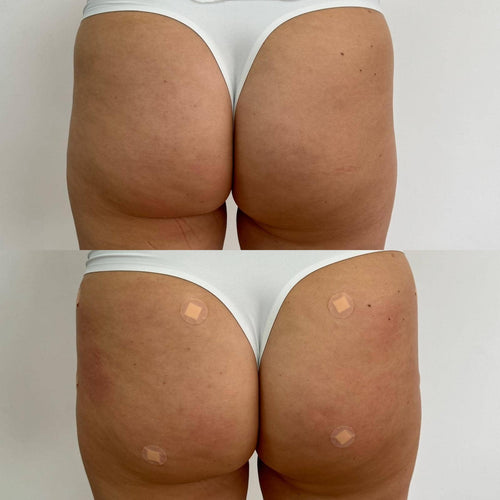Explore the Full Range of Dermal Filler Services at It’s Me and You Clinic
What is Skin Pen Microneedling?
A Minimally Invasive Treatment for Skin Revitalization
Skin Pen Microneedling is a cutting-edge, minimally invasive treatment designed to revitalize and rejuvenate the skin, addressing various concerns such as fine lines, wrinkles, scars, and uneven texture. This advanced technique utilizes a specialized device featuring microneedles of varying lengths to create micro-injuries in the skin.
The treatment stimulates the body’s natural healing process, triggering a cascade of biological responses that promote collagen production, cell regeneration, and elastin synthesis. As a result, the skin appears smoother, tighter, and more radiant, with improved texture and reduced signs of aging.
One of the key benefits of Skin Pen Microneedling is its ability to target specific areas of concern without causing excessive downtime or discomfort. The treatment can be tailored to address various skin types and concerns, from acne scars and hyperpigmentation to fine lines and facial folds.
The microneedles used in this treatment are designed to create micro-channels in the skin, allowing for enhanced penetration of active ingredients and serums. This enables a more effective delivery of treatments, such as facial creams or ointments, leading to improved results and faster recovery times.
When combined with other treatments, such as platelet-rich plasma (PRP) therapy or chemical peels, Skin Pen Microneedling can produce remarkable results in addressing complex skin concerns. By leveraging the power of this treatment, individuals near Mickleham, Surrey, can achieve a more youthful and rejuvenated appearance without undergoing extensive surgery or lengthy recovery periods.
It’s essential to note that while Skin Pen Microneedling is considered a minimally invasive procedure, it still requires proper training and expertise to ensure safe and effective treatment. Consulting with a qualified practitioner or dermatologist experienced in this technique is crucial for achieving optimal results and minimizing potential risks associated with the treatment.
Overall, Skin Pen Microneedling represents an exciting advancement in non-surgical skin rejuvenation, offering patients near Mickleham, Surrey, an opportunity to address various skin concerns while preserving their natural beauty and promoting healthy, radiant skin.
The skin’s outermost layer, the epidermis, contains a high concentration of collagen and elastin.
Skin Pen Microneedling, also known as collagen induction therapy, is a minimally invasive, non-surgical treatment that uses fine needles to create micro-injuries in the skin.
The goal of these micro-injuries is to stimulate the body’s natural response to heal itself by producing new collagen, which is essential for healthy-looking skin.
The skin’s outermost layer, the epidermis, contains a high concentration of collagen and
However, as we age or are exposed to environmental stressors, the production of collagen and elastin can slow down, leading to signs of aging such as fine lines, wrinkles, and loss of firmness.
Skin Pen Microneedling addresses this issue by creating micro-injuries that signal the skin to produce new collagen, which helps to:
- Reduce fine lines and wrinkles
- Firm up sagging skin
- Improve skin texture and tone
- Enhance skin brightness and radiance
The treatment involves a series of tiny punctures made by the Skin Pen, which are so fine that they don’t cause any significant discomfort or damage to the skin.
After the treatment, your skin may appear slightly pink or red due to the micro-injuries, but this should subside within a few hours. It’s also common for clients to experience some mild sensitivity during and after the treatment, but this is usually temporary and manageable with over-the-counter pain relievers.
In terms of downtime, most people can resume their normal activities immediately after the treatment, although it’s recommended to avoid heavy exercise or exposure to the sun for a few days.
Skin Pen Microneedling is an excellent solution for those looking to address signs of aging and improve overall skin health, and when performed by an experienced practitioner near Mickleham, Surrey, can be a safe and effective way to achieve radiant, glowing skin.
How Does Skin Pen Microneedling Work in Mickleham, Surrey?
A Device that Stimulates Collagen Production
Skin Pen microneedling is a non-invasive, minimally invasive treatment that uses tiny needles to create micro-injuries on the skin’s surface.
The device emits a series of ultra-fine, sterile needles that penetrate the skin to stimulate collagen production and improve skin texture.
When these micro-needles come into contact with the skin, they trigger an immune response that stimulates blood flow to the affected area, causing micro-trauma that promotes natural healing processes.
The body’s natural repair mechanisms are activated, resulting in increased collagen production, which can help reduce fine lines and wrinkles, improve skin elasticity, and create a smoother texture.
This increase in collagen production is due to the stimulation of fibroblasts, the cells responsible for producing collagen, elastin, and other structural proteins that give our skin its strength and firmness.
As new collagen is produced, it fills in the gaps between existing collagen fibers, creating a smoother, more even-toned complexion, while also reducing the appearance of pores and fine lines.
The Skin Pen microneedling device has been shown to be effective in improving skin texture, reducing the appearance of acne scars and hyperpigmentation, and promoting wound healing.
One of the benefits of this treatment is that it can be used on a variety of skin types, including sensitive skin, making it an attractive option for individuals seeking non-invasive alternatives to traditional laser resurfacing and chemical peels.
The treatment process typically involves 10-15 minutes of microneedling followed by application of topical serums or creams that help soothe the skin and promote further collagen production.
While some redness may occur immediately after treatment, it is usually mild and temporary, resolving within a few hours without any further intervention required.
Regular maintenance treatments are recommended to maintain optimal results, as continued stimulation of collagen production will continue to improve the overall health and appearance of the skin.
Skin Pen microneedling is a minimally invasive cosmetic treatment that uses tiny needles to create micro-injuries in the skin, stimulating collagen production and promoting cell turnover.
The process involves using a handheld device with multiple needles that are designed to penetrate the skin at different depths, depending on the specific concerns being addressed.
When these micro-needles puncture the skin, they cause a gentle trauma response, which triggers the release of growth factors and stimulates collagen production in the deeper layers of the skin.
As a result, the skin begins to regenerate and repair itself, leading to improved texture, tone, and appearance.
Contact Dr. Laura Geige for Advanced Anti-Wrinkle Injectables

The Skin Pen device used for this treatment is specifically designed to penetrate at a depth that allows for effective stimulation of collagen production without causing significant damage to the surrounding tissue.
This makes it an excellent option for addressing a range of concerns, including fine lines and wrinkles, acne scars, stretch marks, and hyperpigmentation.
The treatment typically takes around 30-60 minutes to complete and can be performed on most areas of the face and body.
After the procedure, the skin may appear pink or flushed due to inflammation caused by the micro-injuries, but this usually subsides within a few hours.
Cooling creams or serums are often applied after treatment to soothe the skin and promote faster healing.
Maintenance treatments are usually recommended every 4-6 weeks for optimal results, depending on individual skin concerns and needs.
It’s essential to note that Skin Pen microneedling is not a substitute for more invasive procedures like facelifts or chemical peels; however, it can be used in combination with other treatments to achieve enhanced results.
If you’re considering this treatment in the Mickleham area, make sure to consult with a qualified practitioner who has experience with the Skin Pen device and is knowledgeable about treating specific skin concerns.
The treatment involves the use of microneedles which cause microinjuries to the skin.
Skin Pen Microneedling is a popular non-surgical treatment that uses micro-needling technology to rejuvenate and revitalize the skin. In the area around Mickleham in Surrey, this treatment has become increasingly sought after for its ability to address various skin concerns.
The Skin Pen Microneedling device contains tiny needles that create precise micro-injuries in the skin. When these micro-injuries occur, they trigger a wound-healing response in the body, stimulating collagen and elastin production.
Collagen is a vital protein found in the skin, responsible for maintaining its elasticity and firmness. As we age, our natural collagen levels decrease, leading to wrinkles and sagging skin. By stimulating collagen production through microneedling, Skin Pen can help restore the skin’s youthful appearance.
The process of microneedling is quite simple. First, a topical anesthetic may be applied to numb the area to minimize any discomfort during treatment. Then, the Skin Pen device is glided across the skin in multiple directions, creating micro-injuries as it goes. The needles are designed to cause minimal trauma to the skin while still effectively stimulating collagen and elastin production.
After the treatment, patients may experience some mild redness or swelling due to the body’s natural response to the micro-injuries. This typically subsides within a few hours, leaving behind smooth, radiant-looking skin.
The benefits of Skin Pen Microneedling are numerous and well-documented. It can effectively reduce fine lines, wrinkles, and scars while promoting an overall improvement in skin texture and tone. In the area around Mickleham, Surrey, many have experienced outstanding results from this treatment, making it a popular choice for those seeking to rejuvenate their appearance without surgery.
It is essential to note that Skin Pen Microneedling should only be performed by a trained professional in a sterile environment to minimize the risk of complications. Before undergoing treatment, patients should consult with an experienced practitioner to discuss their specific skin concerns and determine if Skin Pen Microneedling is the right option for them.
For those residing around Mickleham, Surrey, seeking the best results from Skin Pen Microneedling requires choosing a reputable and well-equipped clinic. It is crucial to research thoroughly and select a practitioner with extensive experience in performing this treatment to ensure optimal outcomes.
By understanding how Skin Pen Microneedling works and selecting the right practitioner, individuals can achieve stunning skin rejuvenation results without surgery, making it an attractive option for those seeking a non-invasive solution to various skin concerns.
This stimulates the body’s natural healing process and leads to increased collagen production.
Skin Pen microneedling is a minimally invasive, non-surgical treatment that uses tiny needles to stimulate collagen production and improve skin texture.
The procedure involves using a handheld device with multiple micro-needles that create micro-injuries in the skin, causing a gentle inflammation response.
This inflammation triggers the body’s natural healing process, which leads to increased collagen production and the growth of new elastin fibers.
As the skin repairs itself, it becomes thicker, more even-toned, and smoother, with improved texture and reduced appearance of fine lines and wrinkles.
The Skin Pen device is specifically designed for use on the face and neck, but can also be used on other areas of the body where scars or imperfections are a concern.
The treatment typically takes around 15-60 minutes to complete, depending on the area being treated and the individual’s skin condition.
Multiple sessions may be necessary for optimal results, with maintenance treatments recommended every 4-6 weeks to maintain the benefits.
Skin Pen microneedling is often used in conjunction with other treatments such as chemical peels, facials, or laser therapy to enhance its effects and provide a more comprehensive approach to skincare.
The treatment is well-tolerated by most people, but some may experience mild redness, sensitivity, or temporary bruising at the treatment site.
It’s essential to note that Skin Pen microneedling is not suitable for everyone, particularly those with certain skin conditions such as active acne, rosacea, or eczema, or those taking certain medications that may interact with the treatment.
To get the best results from Skin Pen microneedling in Mickleham, Surrey, it’s crucial to choose a qualified and experienced practitioner who can guide you through the process and help you achieve your skincare goals.
The resulting increase in collagen density gives the skin a smoother appearance, reducing fine lines and wrinkles.
Skin Pen microneedling is a minimally invasive, non-surgical treatment that uses tiny needles to create micro-injuries in the skin, stimulating the body’s natural collagen production and rejuvenating the appearance of the skin.
The Skin Pen device uses a sterile, disposable cartridge with 12-15 stainless steel needles that are designed to penetrate the skin at a depth of up to 2.5 mm, depending on the setting chosen.
When the needles enter the skin, they create micro-injuries that signal the body to produce new collagen and elastin, which helps to improve the texture, tone, and firmness of the skin.
The treatment is typically performed in a series of sessions, spaced 4-6 weeks apart, allowing for maximum penetration of the Skin Pen needles and optimal results.
During each session, the Skin Pen device will be passed over the skin several times, depending on the area being treated and the desired level of rejuvenation.
The treatment is usually well-tolerated, with some mild discomfort or stinging sensation reported by a few clients. However, this is typically short-lived and subsides within 15-30 minutes after the procedure.
Benefits of Skin Pen Microneedling
• Reduces appearance of fine lines and wrinkles
• Improves skin texture and tone

• Enhances collagen density and elasticity
• Minimizes pores and skin irregularities
• Stimulates elastin production for a more youthful appearance
What to Expect After Treatment
• Mild redness and inflammation may occur, but this will subside within 24-48 hours
• The skin may feel slightly tender or sensitive
• Follow-up sessions are usually spaced 4-6 weeks apart to allow for maximum results
Contraindications and Precautions
• Pregnancy and breastfeeding: not recommended due to potential effects on collagen production
• Active skin conditions such as eczema, psoriasis, or rosacea
• Certain medical conditions such as diabetes, autoimmune disorders, or skin cancer
Microneedling with a SkinPen is a minimally invasive treatment that uses tiny needles to create micro-injuries in the skin. This stimulates the body’s natural healing process, leading to collagen and elastin production, which are essential for skin health.
The treatment works by creating a series of microscopic punctures in the skin, which triggers an inflammatory response. The skin then begins to repair itself by producing new collagen and elastin fibers, which can help improve the appearance of fine lines, wrinkles, and acne scars.
During the treatment, the SkinPen is applied to the skin in a series of gentle passes, using a sterile needle tip. The needles penetrate the skin to create micro-injuries, stimulating collagen production and promoting tissue repair.
The benefits of microneedling with a SkinPen include:
- Improved skin texture and tone
- Reduced appearance of fine lines and wrinkles
- Minimized appearance of acne scars and hyperpigmentation
- Stimulated collagen production for long-term skin rejuvenation
The SkinPen is a versatile treatment that can be used on various areas of the face and body, including the forehead, cheeks, chin, neck, hands, and legs. It’s an excellent option for individuals looking to improve their skin texture, reduce signs of aging, or address specific skin concerns such as acne scars.
Before undergoing microneedling with a SkinPen, it’s essential to follow a skincare routine that prepares the skin for treatment. This may include avoiding certain products, using gentle cleansers, and applying topical treatments as recommended by your practitioner.
After the treatment, you can expect some redness and sensitivity in the treated area. This is a normal reaction and usually subsides within 24 hours. To minimize downtime and promote optimal results, it’s crucial to follow post-treatment instructions provided by your practitioner.
The frequency of microneedling treatments varies depending on individual skin concerns and treatment goals. Some people may require a single treatment, while others may benefit from multiple sessions spaced several weeks apart. Your practitioner will determine the best course of treatment for you based on your unique needs and skin type.
Benefits of Skin Pen Microneedling for Surrey Residents
An Effective Treatment Option for Various Skin Concerns
The skin care industry has witnessed a significant advancement with the introduction of Microneedling, a minimally invasive treatment that uses fine needles to stimulate collagen production and improve skin texture.
Skin Pen Microneedling is an effective solution for various skin concerns, making it an attractive option for residents in Surrey, particularly those near Mickleham.
The benefits of Skin Pen Microneedling are numerous:
**Improved Skin Texture**: By stimulating collagen production, Microneedling helps to reduce the appearance of fine lines and wrinkles, leaving the skin looking smoother and more radiant.
Collagen Induction Therapy: This treatment promotes natural collagen production, which is essential for maintaining healthy and youthful-looking skin.
Skin Tightening**: Microneedling can help to tighten the skin, reducing the appearance of sagging or loose skin, giving the face a more lifted and refreshed look.
**Minimally Invasive**: Unlike other surgical procedures, Skin Pen Microneedling is a minimally invasive treatment that requires no downtime, making it an ideal option for those with busy schedules.
No Downtime Required: As the treatment is non-surgical and pain-free, patients can return to their daily activities immediately after the procedure.
**Effective for Various Skin Concerns**: Skin Pen Microneedling can address a range of skin concerns, including acne scars, hyperpigmentation, fine lines, and wrinkles, making it an effective solution for various skin types and tones.
Surrey residents can benefit from this treatment option by scheduling appointments at reputable clinics near Mickleham. By opting for Skin Pen Microneedling, individuals can improve their overall skin health and achieve a more radiant complexion.
The benefits of Skin Pen Microneedling for Surrey residents are numerous and can greatly improve the overall appearance and health of their skin.
This minimally invasive treatment uses fine needles to create micro-injuries in the skin, stimulating collagen production and improving the texture and tone of the skin.
For those living near Mickleham, Surrey, Skin Pen Microneedling is a popular choice for addressing various skin concerns, including acne scars, fine lines, wrinkles, and uneven skin texture.
One of the main advantages of this treatment is its ability to improve skin elasticity and firmness, leaving the skin looking smoother and more radiant. This makes it an ideal solution for individuals seeking to rejuvenate their appearance without surgery or downtime.
Another benefit of Skin Pen Microneedling is its effectiveness in reducing the appearance of pores and fine lines, giving the skin a more even and youthful appearance. This can be particularly beneficial for those living in an area with high levels of pollution, such as Surrey, where environmental factors can contribute to premature aging.
In addition to its anti-aging benefits, Skin Pen Microneedling has also been shown to be effective in reducing the appearance of acne scars and hyperpigmentation. This makes it an excellent choice for individuals seeking to address these skin concerns without resorting to more invasive treatments.
The treatment is typically performed on a series of sessions, spaced 4-6 weeks apart, allowing the skin time to heal and respond to the microneedling process. During this time, patients can expect to see improvements in their skin texture and appearance, as well as an increase in collagen production.
While Skin Pen Microneedling is generally considered safe and well-tolerated, it’s essential for individuals to consult with a qualified practitioner or dermatologist before undergoing treatment. This will help ensure that they are suitable candidates for the procedure and can expect optimal results.
In conclusion, Skin Pen Microneedling is a highly effective treatment option for Surrey residents seeking to improve their skin appearance and health. With its ability to stimulate collagen production, reduce fine lines and wrinkles, and address various skin concerns, it’s an excellent choice for those looking for a minimally invasive solution with lasting results.
Skin rejuvenation and improvement of texture
Microneedling with a SkinPen is a minimally invasive, non-surgical treatment that has become increasingly popular among residents in Surrey for its numerous benefits.
One of the most significant advantages of SkinPen microneedling is its ability to stimulate collagen production and promote skin rejuvenation. By creating micro-injuries in the skin, the SkinPen device triggers a healing response that leads to the production of new collagen and elastin, resulting in smoother, more youthful-looking skin.
Another benefit of SkinPen microneedling is its effectiveness in improving skin texture. The treatment helps to reduce the appearance of fine lines and wrinkles, while also minimizing the size of pores. This leaves the skin looking brighter, more even-toned, and with a subtle glow.
SkinPen microneedling near Mickleham, Surrey, can also be used to address various skin concerns, such as acne scars, stretch marks, and hyperpigmentation. The treatment has been shown to be particularly effective in reducing the appearance of atrophic scarring, leaving the skin looking smoother and more even.
The SkinPen device is safe for use on most areas of the face and body, including delicate skin around the eyes, mouth, and neck. This makes it an ideal treatment option for Surrey residents who want to address a range of skin concerns without undergoing invasive surgery or prolonged downtime.
Some benefits of using a SkinPen in a professional setting near Mickleham, Surrey include:
- Customizable treatment settings to suit individual skin types and concerns
- Advanced sterilization and sanitation procedures for a safe and hygienic experience
- Expert guidance on pre- and post-treatment care for optimal results
- Access to high-quality, medical-grade SkinPen devices
When combined with other treatments or skincare products, microneedling with a SkinPen can enhance their effectiveness and lead to even more impressive results. Surrey residents who are looking for a comprehensive approach to skin rejuvenation may benefit from consulting with a qualified practitioner near Mickleham.
Microneedling with the SkinPen is a minimally invasive treatment that stimulates collagen production and improves skin texture by creating micro-injuries in the skin.
Residents of Surrey can benefit from this treatment in various ways:
-
Reducing fine lines and wrinkles, resulting in a smoother, more youthful complexion
-
Improving skin elasticity, making it appear firmer and more radiant
-
Enhancing skin tone, reducing the appearance of hyperpigmentation and dark spots
-
Minimizing pores, giving the skin a cleaner and more refined look
-
Fading acne scars and stretch marks, leaving the skin looking smoother and more even
-
Stimulating collagen production, which can help to address concerns related to aging and sun damage.
The SkinPen Microneedling treatment is also suitable for addressing various skin concerns, including:
-
Damaged skin caused by acne or other conditions
-
Scars from surgery or injuries
-
Stretch marks and fine lines on the décolletage and hands
-
Pigmentation issues, such as melasma and sun damage
The benefits of SkinPen Microneedling for Surrey residents can be summarized as follows:
-
Improves overall skin appearance and texture
-
Boosts collagen production, resulting in a more youthful look
-
Suitable for addressing various skin concerns, including scars, stretch marks, and pigmentation issues
-
Minimally invasive and non-surgical treatment options available near Mickleham, Surrey
Skin Pen Microneedling is a cutting-edge minimally invasive treatment that has gained immense popularity among Surrey residents seeking to rejuvenate and refresh their skin. This innovative technique uses fine needles to create micro-injuries in the skin, stimulating collagen production and promoting cell renewal.
For those living near Mickleham, Skin Pen Microneedling offers a wealth of benefits, starting with its ability to improve facial texture and tone. The treatment encourages the body’s natural repair process, resulting in smoother, more even-toned skin that looks and feels youthful.
One of the primary advantages of Skin Pen Microneedling is its capacity to reduce the appearance of fine lines and wrinkles. As we age, our skin’s ability to retain moisture decreases, leading to creases and folds that can make us look older than we feel. By stimulating collagen production, this treatment helps plump up these areas, giving the face a more radiant, lifted appearance.
In addition to its anti-aging benefits, Skin Pen Microneedling also offers skin brightening properties. This means that it can help reduce the visibility of age spots and hyperpigmentation, leaving behind a smoother, more even complexion.
Another key benefit of this treatment is its ability to minimize scarring. Whether caused by acne, accidents, or surgical procedures, scars can be a source of distress for many people. Skin Pen Microneedling helps break down scar tissue and promote new collagen growth, which in turn reduces the appearance of these unsightly marks.
Skin Pen Microneedling is also highly beneficial for individuals with acne-prone skin. By encouraging cell renewal and reducing inflammation, this treatment helps minimize the occurrence of breakouts and leaves behind healthier, clearer-looking skin.
One of the most significant advantages of Skin Pen Microneedling in Surrey is its non-invasive nature. Unlike surgery or other invasive treatments, this method requires no incisions or downtime, making it a convenient option for those with busy schedules or who prefer to avoid lengthy recovery periods.
Another significant benefit of this treatment is that it’s highly customizable. Depending on individual skin concerns and needs, patients can choose from various needle depths and configurations to achieve the optimal results for their unique skin type.
Skin Pen Microneedling is also an excellent choice for those who are looking for a long-term solution rather than quick fixes. This treatment encourages natural collagen production, which means that its benefits can last for months or even years with proper maintenance and follow-up treatments.
The benefits of skin pen microneedling for Surrey residents are numerous and can greatly enhance their overall appearance and wellbeing.
Improved Skin Texture
Skin pen microneedling is a non-invasive treatment that uses tiny needles to create micro-injuries in the skin, stimulating collagen production and improving texture.
- Reduces fine lines and wrinkles
- Improves skin elasticity
- Smothers pores
Reach Dr. Laura Geige at It’s Me and You Clinic Without Hesitation
Enhanced Skin Tone
Skin pen microneedling can also improve the overall tone of the skin, reducing hyperpigmentation and promoting a more even complexion.
- Reduces appearance of age spots and freckles
- Improves skin radiance
- Fades redness and rosacea
Natural Collagen Boost
The treatment encourages the body’s natural collagen production, plumping up the skin and reducing the appearance of fine lines and wrinkles.
- Improves skin firmness
- Reduces nasolabial fold depth
- Soothes acne scars
No Downtime Required
The non-invasive nature of skin pen microneedling means that Surrey residents can undergo treatment without worrying about extended downtime or recovery periods.
This makes it an ideal solution for those with busy lifestyles, allowing them to quickly return to their normal daily activities while still enjoying the benefits of improved skin texture and tone.













